Trees are not just an indispensable natural element for the planet Earth. They contain and transmit a story that can speak to us. Today Italy counts 3,561 monumental trees to be protected. They’re included in the list drawn up by the Mipaaf or the Ministry of Agricultural, Food and Forestry Policies.
In this article we’re going to discover the 10 most beautiful Italian monumental trees in the hope of introducing you to another side of the natural world.
1. Monumental Oak Tenuta Bocchineri – Calabria
This imposing bicentenary oak is located in Tenuta Bocchineri in Rogliano, in the province of Cosenza. Its majesty is given by its 28 meters in height, 5 in circumference at the base and 25 in diameter at the crown. “Quercus Petrae” is its scientific classification.
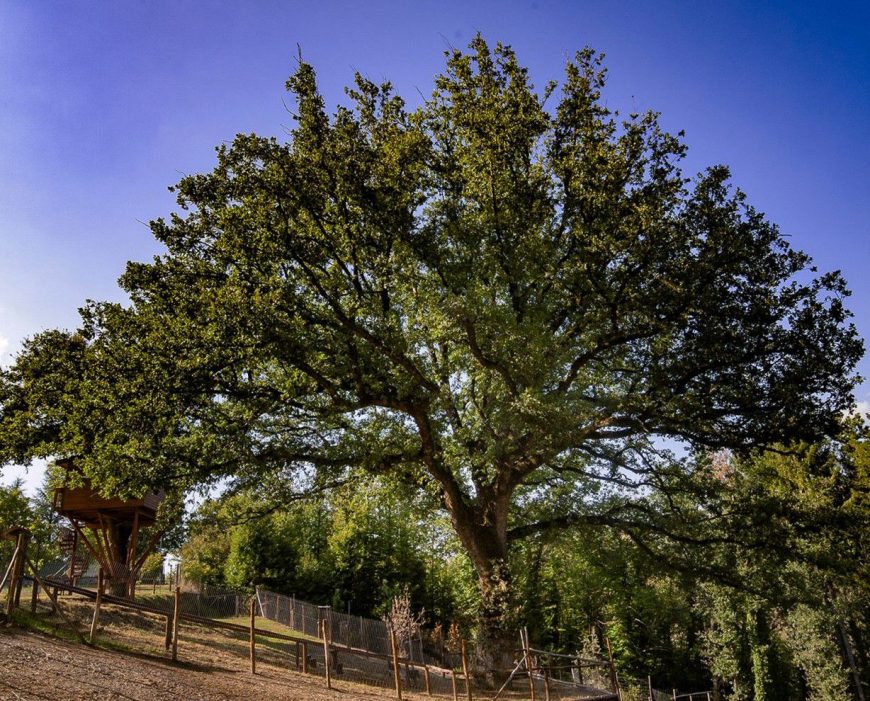
The oak is inserted in a context of flora and fauna characterized by paths and traces of lived rurality. Indeed, not far away, you’ll admire a rare tree, the “Germanic medlar” and a 60-meter-long wall (so-called “aquarium”) built with dry stones. It was once used as a support for a channel of water conveyed by the river to serve the irrigation of the gardens below.
To fully enjoy this paradise, we recommend staying at Tenuta Bocchineri, surrounded by greenery, among woods, organic crops and eco-tourism trails. You can also sleep in the tree house suspended between the branches of a tree in direct contact with nature.
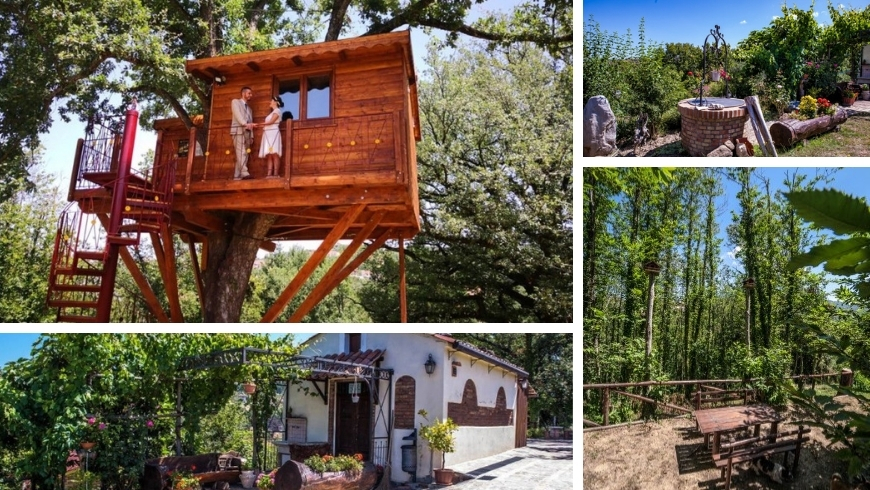
2. The Chestnut Tree of the Hundred Horses – Sicily
You’ll find this thousand-year-old chestnut tree in the Etna Park in the municipality of Sant’Alfio (Catania). It’s one of the oldest and most famous trees in Italy. It was awarded the title of Monument messenger of peace by Unesco in 2006. It’s 22 meters high and has 3 stems, with 579 meters in circumference. It owes its name to a legend about a queen. The latter was on Etna with its escort of one hundred knights. It’s said that when a violent storm broke out, she found refuge right under this chestnut tree.
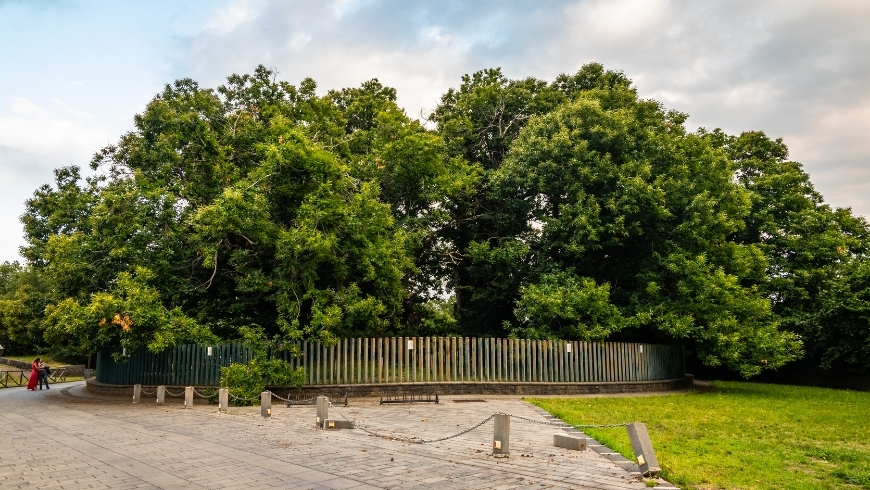
On the Etna Park page you can discover the paths to follow, the points of greatest interest and much more for an experience in name of nature and adventure.
If you’re looking for an eco-friendly accommodation in Sant’Alfio, we recommend Casa di Paglia Felcerossa sull’Etna and Antico Palmento Barraccotto.
3. The Lime-Tree of Casola – Campania
Some treasures are hidden in Caserta Vecchia. This is the case of the centuries-old lime-tree of Casola. It embellishes the parvis of the San Marco Evangelista Church. The tree, a 13-meter-high European lime-tree, has a diameter of 1.5 meters and a circumference of about 5 meters. The plant is estimated to be 450 years old. It’s said that the centuries-old lime-tree of Casola has medieval origins like the nearby and magnificent Caserta Vecchia. It was planted, along with two other specimens, towards the end of the 1600s.

A little further than Caserta Vecchia, in Benevento, let yourself be enchanted by the beauty of Casa Lerario: love for nature combined with the comforts of a typical Italian farmhouse. The proximity of the Taburno-Camposauro Regional Natural Park allows you to choose from a wide range of trekking excursions and the possibility of horseback riding.
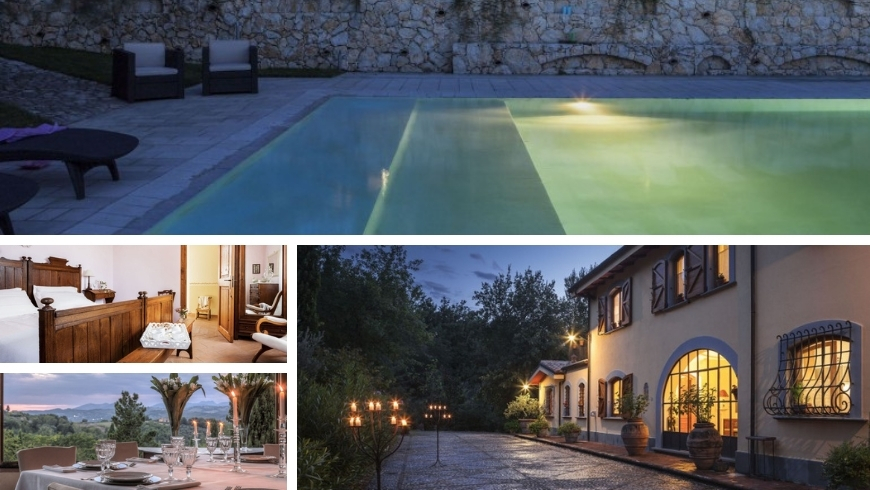
4. The Oak of San Vito – Campania
You’ll find another monumental tree in Campania, this time in San Vito (Aquilonia – Av). We’re talking about the historic oak located in the area in front of the Badia di San Vito: 16.4 meters high with a trunk circumference greater than 5 meters. There’s an ancient legend according to which when someone tried to cut the oak, the hatchet got stuck and the branches wept tears of blood. Only when the evildoers renounced the wrongdoing did the oak return the hatchet and the branches ended their weeping. The big oak also represents a point of reference for the community. For example, on 9 May and 15 and 16 June, people gather under his shadow to celebrate the patron saint of Aquilonia.
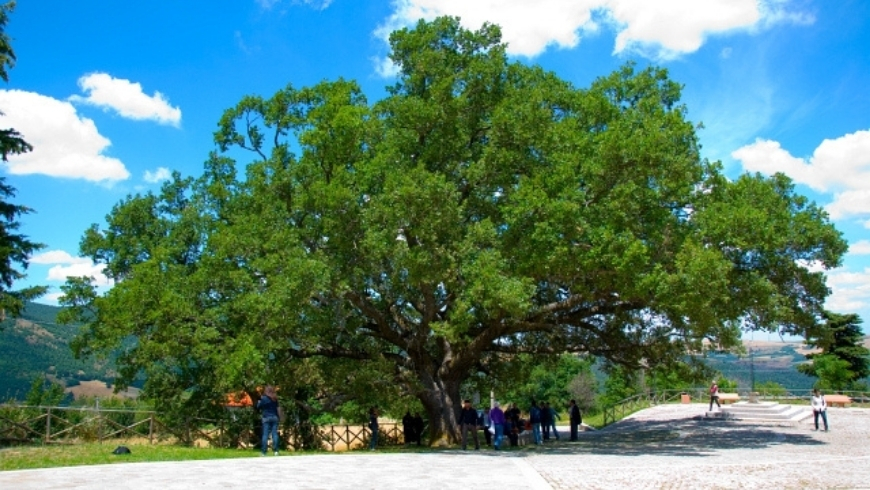
5. The Vallonea Oak of Tricase – Puglia
The oldest tree in Puglia is the Vallonea oak of Tricase (Lecce), which has been tracing the history of the area for about 900 years. With its crown that can cover almost 700 square metres, the oak has been a candidate for UNESCO World Heritage status since 1990.
Legend has it that Frederick II, during one of his visits to the Terra d’Otranto, was looking for shelter from the rain after the storm broke out. He found it under the Vallonea Oak, whose imposing mantle gave shelter not only to him but also to his knights. Various other legends see the Vallonea Oak as a favourite place for the practice of divination. Its acorns are used to make tannin, a basic substance for tanning leather, an ancient local practice.
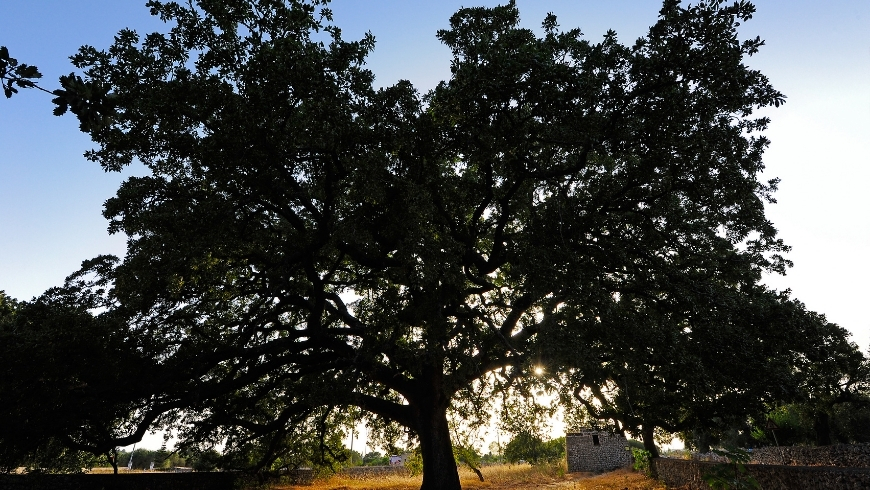
We recommend the route from Marina Serra to Quercia Vallonea for the more adventurous travelers. It counts about 11.7 km and has a duration of 4h. You won’t regret it!
As for accommodation, we recommend the Callistos Hotel & Spa. It was built following the criteria of eco-sustainability; it’ll put you at ease while enjoying the warm hospitality of Salento. The Callistos Hotel is the ideal place for business customers, but also for those who want to enjoy a holiday to discover the beauties of this land with a millenary tradition.
6. The Witches Oak in Capannori – Tuscany
In the magical Tuscany, in the province of Lucca, you’ll admire the Witches Oak also known as Pinocchio’s Oak. Indeed, Carlo Collodi took inspiration from the latter to write the adventures of the marionette and in particular the passage in which Pinocchio is hanged from a large oak tree. It’s full of legends about it since it’s 600 years old. It’s said that this plant was the meeting point for witches who used to do their rites and dance on it. Its flattened shape, an unusual characteristic for the trees of this family, would be due to the repeated presence of witches on the foliage. The Oak is also amazing for its size: 24 meters high, with a circumference of 4.5 meters and a crown of over 4o meters in diameter.
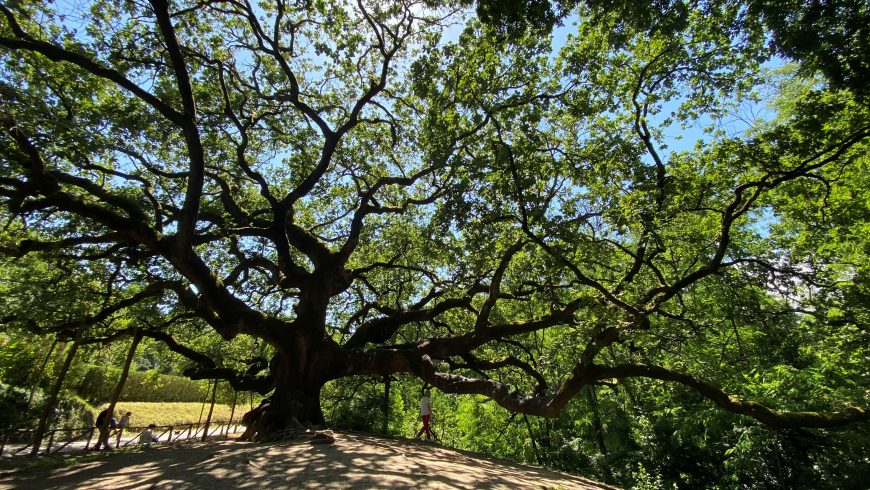
Do not miss the opportunity to stroll in the park of Villa Carrara where, in addition to the Quercia, it’s possible to admire a beautiful unspoiled natural landscape typical of Tuscany.
Among the hills of Capannori, you’ll be spoiled for choice with regards to accommodation facilities in which to stay overnight. We recommend the Agriturismo alle Camelie, Villa Galgani and Villa Lean. These are all eco-sustainable accommodation facilities that allow you to enjoy a peaceful stay in contact with nature. Experience the magic of the Tuscan atmosphere.
7. The Red Oak in Piazza XXIV Maggio – Lombardy
This oak dating back to the first postwar period stands in Milan, in Piazza XXIV Maggio. It has a circumference of 465 centimeters and a height of 18 meters. The tree has a great symbolic meaning. Indeed, it was planted by the engineer Giunio Capè in honor of his son Giuseppe who survived the war. Then, it was dedicated to all the fallen for the homeland of the Ticinese-Lodovica district.
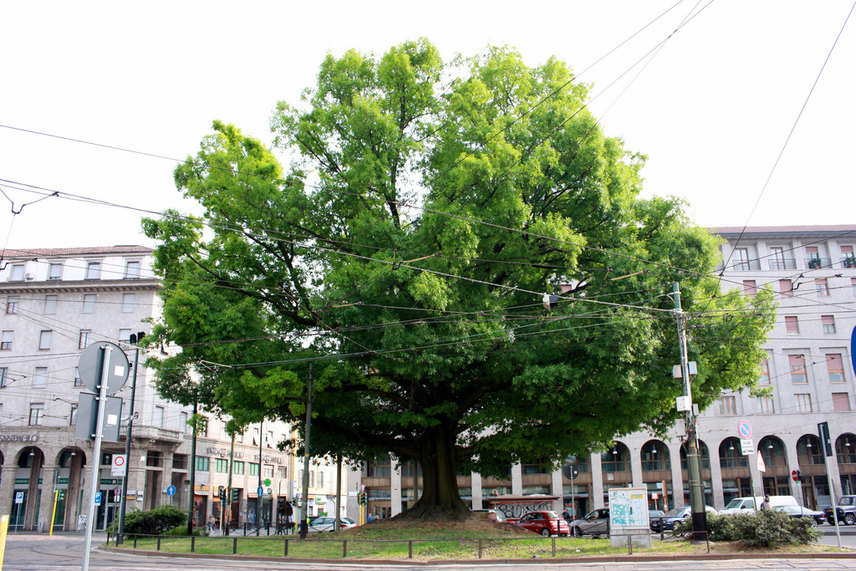
Nearby, you’ll find Parco Papa Giovanni Paolo II also called “parco delle basiliche” because it connects basilica di San Lorenzo and basilica di Sant’Eustorgio.
8. The Oak of Montale – Lombardy
You’ll also find the Red Oak of Montale in Milan. People call it by this name because it’s said that one of the greatest Italian writers, Eugenio Montale, winner of the Nobel Prize for Literature in 1975, used to go to the oak to read or write. This plant is a “Quercus Rubra”, a Red Oak from North America. This is one of the largest plants in Milan, although today only a stump remains. Its estimated age is around 200 years.
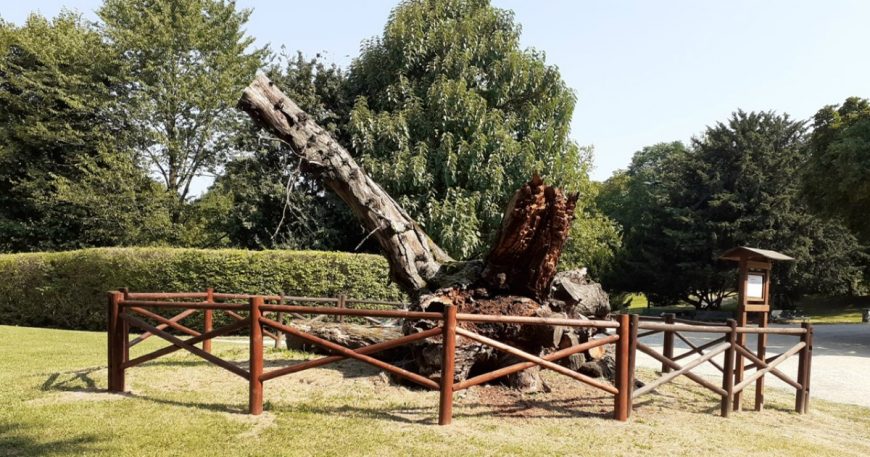
A few steps from the oak is the Natural History Museum. It was founded in 1838 and is one of the most important naturalistic museums in Europe. It’s located within the gardens of Porta Venezia. They’re also called Indro Montanelli public gardens. Inaugurated in 1784 by the Habsburg administration, they’re now named after the journalist and essayist Indro Montanelli who used to spend part of his free time there. Within these gardens there’s also the Hoepli Planetarium. You can’t miss it.
If you’re wondering in which eco-sustainable hotel to stay in Milan or neighboring areas, do not hesitate to access the dedicated Ecobnb page. The proposals adapt to every type of guest and needs.
9. “Gli Imbronciati” in Campiglione-Fenile – Piedmont
Campiglione-Fenile (Turin) hosts an incredible series of monumental trees. Among these, there are two bicentenary plane trees of the hybrid species Platanus acerifolia nicknamed “gli Imbronciati” (the sullen trees). Then we find black pines, an English oak, the largest lyriodendron in the region and the beautiful Caucasian walnut tree in front of the parish church.

In Massarosa in Pian del Quercione (in the province of Lucca) you can admire the “Trenta Zoccoli” olive tree, one of the most famous in Italy. It has a circumference of 10.6 meters, even if its shaft is completely hollowed out inside, in a horseshoe shape. Its age is estimated at 800 to 1,500 years. The writer George Christoph Martini was the first to speak of it in his Journey to Tuscany (1725-1745). Here, he tells of his encounter with this olive tree on which about fifteen olive pickers were working. Climbing the tree they left their thirty clogs (trenta zoccoli) in front of it. Hence the name of the olive tree.
If you visit Campiglione-Fenile, we advise you to stay in the nearby hamlet of Luserna San Giovanni where you can enjoy a suggestive stone farmhouse in the woods. Moreover, it was renovated according to green building techniques. We’re talking about Country House Casa Payer – Veg.
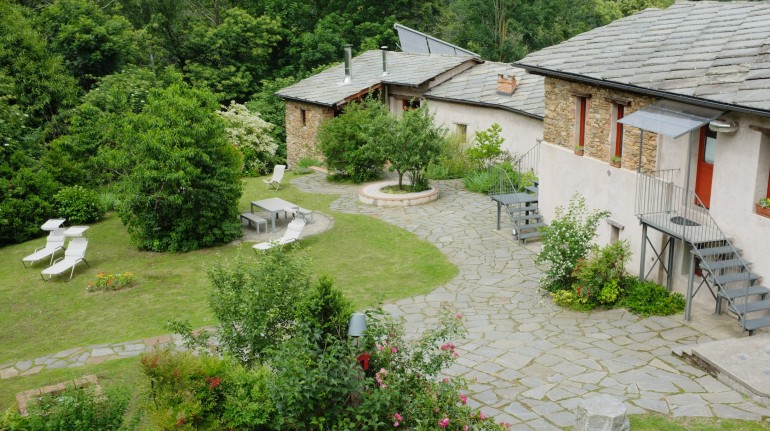
In addition, we recommend the old farmhouse Alessandro Valli in Massarosa. It’s completely renovated and energetically autonomous. This is on the one hand thanks to the photovoltaic panels with accumulators for electricity and on the other hand thanks to solar panels combined with a fireplace stove fueled with wood from the trees of the property for heating and hot water.
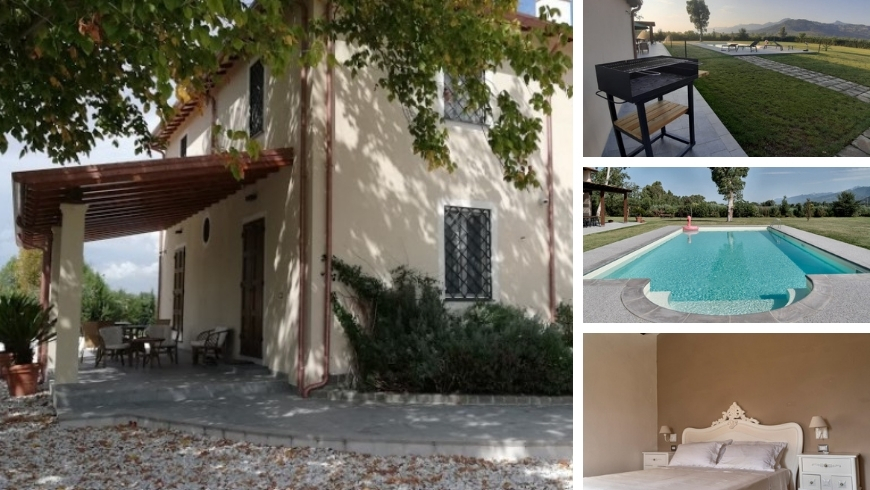
10. Sequoia of Châtillon – Aosta Valley
The enchanting sequoia stands in Châtillon, inside the Gamba Castle Park. It has a height of 35 meters and the trunk circumference is 7.5 meters. This monumental plant, which is estimated to be 350 years old, is even greener and more luxuriant in the summertime.
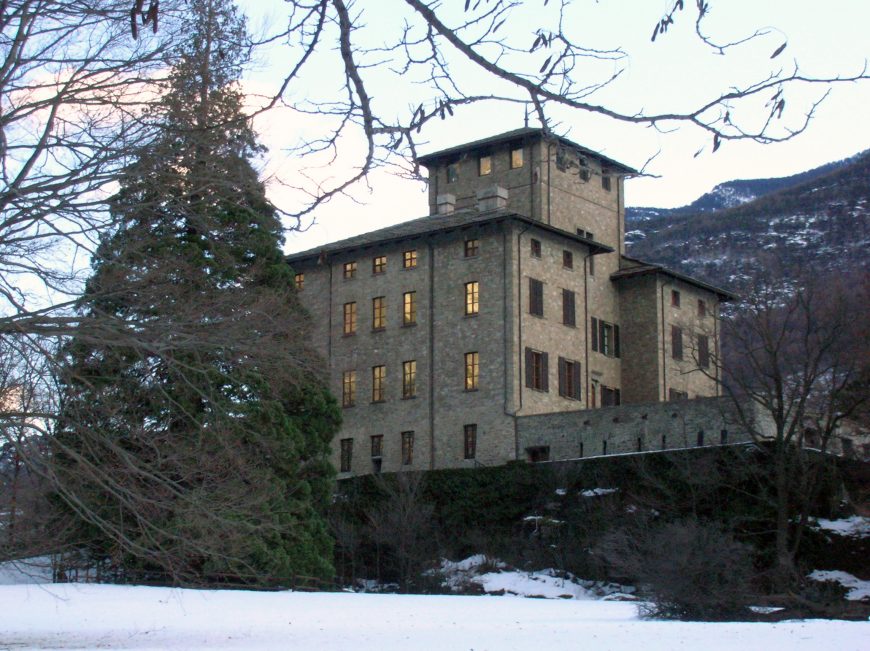
The Park, of about 6 hectares crossed by paths with benches and a wooden fountain, hosts not only the sequoia, but two other monumental trees. We talk about the centenary thorn of Judas and a bald cypress. Therefore, it’s worth strolling through the Gamba Park and visiting the castle of the same name. Indeed, it’s one of the most important castles in the municipality of Châtillon, in full twentieth-century style.
If you intend to stop in this lovely place, we recommend that you spend a few days in the Clair Matin suite. It’s a welcoming villa that respects the main eco-sustainability criteria. It’ll be able to make you appreciate even more the landscape overlooking the castles and the Matterhorn Valley.
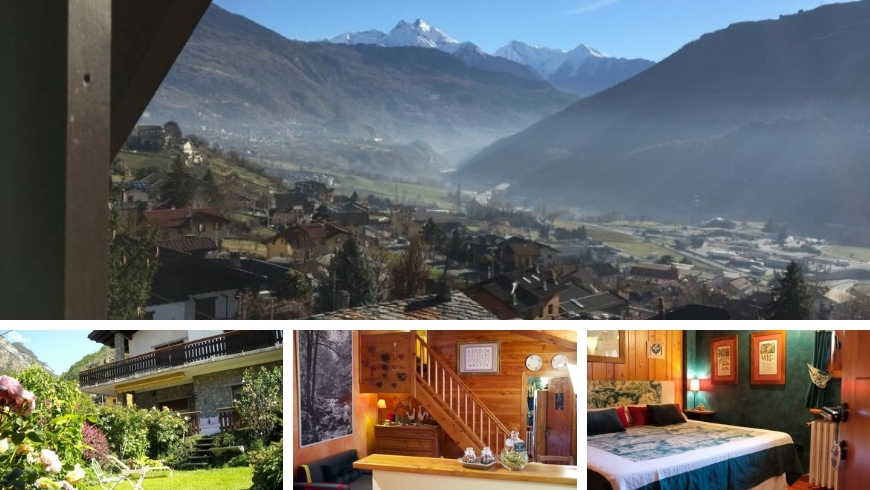
Our journey to discover the most beautiful monumental trees in Italy ends here. But if you want to discover others, we recommend that you consult the Google maps page dedicated entirely to the location of these unique beauties.
Cover image via Canva Pro

 Agriturismo Alle Camelie – Green Farm house in Capannori, LU, Toscana, IT
Agriturismo Alle Camelie – Green Farm house in Capannori, LU, Toscana, IT  Callistos Hotel & Spa – Green Hotel in Tricase, Lecce, Puglia, IT
Callistos Hotel & Spa – Green Hotel in Tricase, Lecce, Puglia, IT  Casa Lerario – Green Farm house in Melizzano, Benevento, Campania, IT
Casa Lerario – Green Farm house in Melizzano, Benevento, Campania, IT  Antico Palmento BaRRaCCoTTo – Green House in Sant'Alfio, Catania, Sicilia, IT
Antico Palmento BaRRaCCoTTo – Green House in Sant'Alfio, Catania, Sicilia, IT  Casa di Paglia Felcerossa sull'Etna – Green House in Sant'Alfio, Catania, Sicilia, IT
Casa di Paglia Felcerossa sull'Etna – Green House in Sant'Alfio, Catania, Sicilia, IT 


